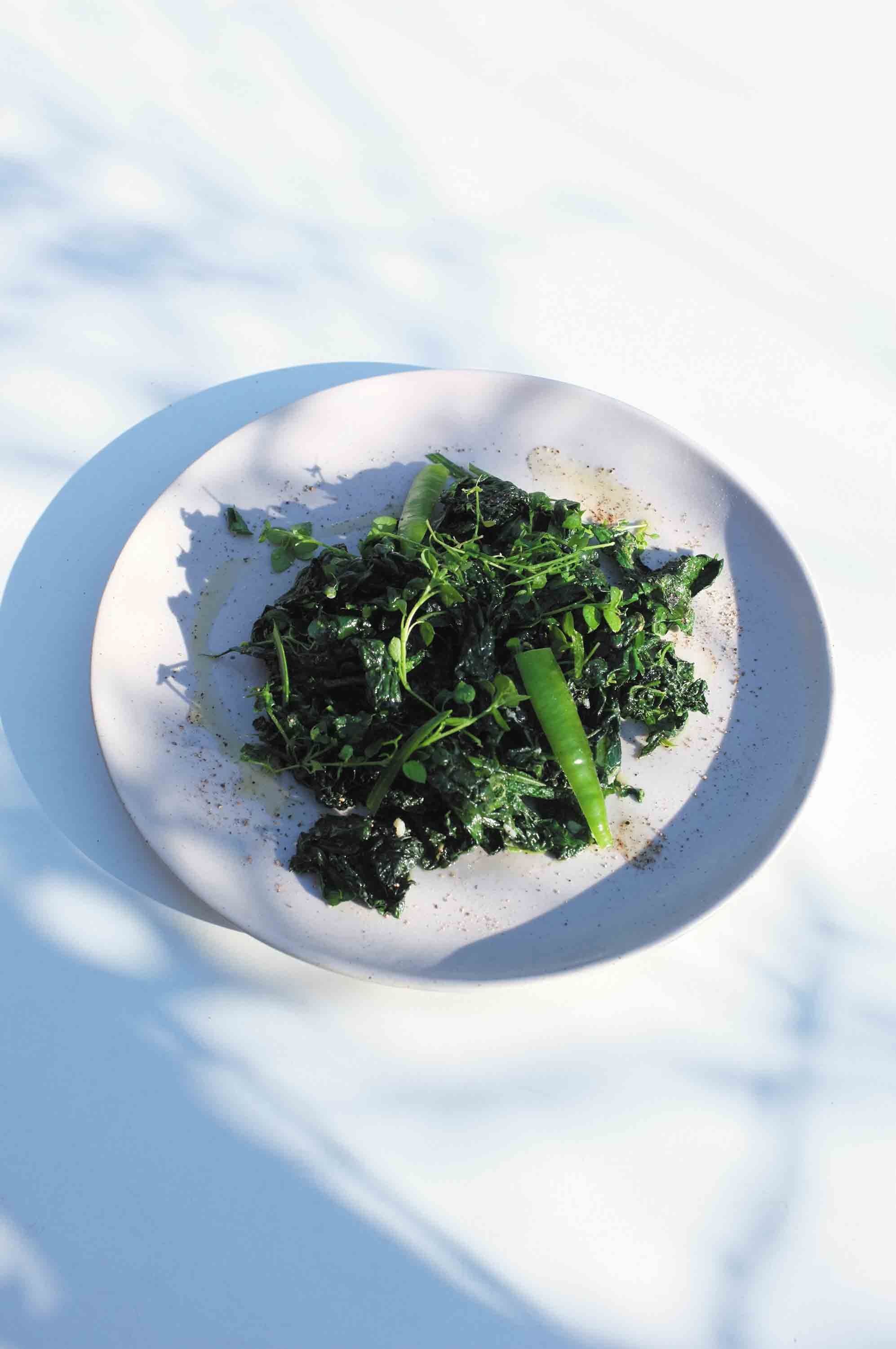EAT ETHIO - RECIPE - GOMEN
Margate’s Eat Ethio founder Helina Tesega gives us her recipe for authentic Gomen
Eat Ethio is a platform where Ethiopian native, curator and founder Helina Tesega expresses an interpretation of her culture, through her eyes and experiences.
Eat Ethio breathes life in a multitude of ways by sharing unique culinary flavours, hosting authentic dining experiences, musical gatherings, coffee ceremonies and designing carefully crafted and sourced Ethiopian products.
"It really came about from my desire to share my culture and my Mum’s cooking to my global community,” says Helina. “I’ve always been passionate about creating gatherings that can inspire. I like to bring together people from differing backgrounds with worldly views, mainly to spark interesting conversation and create connections that can satisfy our curiosity for other cultures, as well as to bridge our different ways of living and inspire and challenge ourselves.
“Wherever I have lived, be it Shanghai, Hong Kong, London and now Margate the project has travelled with me and evolved through the years, it’s fluid and always growing into something new but the ethos is always the same. It’s my yearning to communally celebrate and shine a new light on my culture in a fresh and exciting way whilst at the same time being ‘authentic’ and relaxed.”
From recommending music to presenting authentic recipes, the platform is a brilliant way to engage people in Ethio culture. We asked Helina to put together a spring recipe to give our readers a flavour!
GOMEN
This dish is one of the easiest and most accessible Ethiopian dishes to cook. All the essential ingredients are easily available in most countries and markets, so it's a great introduction to Ethiopian cooking. It's delicious, nutritious and versatile, too.
Gomen is a very typical side dish, which actually can sometimes be served as a main with the addition of short ribs, one of my favourites. But generally you see gomen as part of a vegetarian platter (yetsom beyaynetu).
Since I can’t obtain the exact same greens abroad, I use a variety of alternatives, which have been different depending upon where I’ve been living at the time. These days though I tend to stick to cavelo nero when in season which perhaps feels the closest in texture to the greens back home, and they’re very nutritious and rich in vitamins and iron.
A few years ago I embarked on a journey of herbal medicine, which has opened my eyes to the abundance of wild plants aka ‘weeds’ that grow around us. Besides making medicine from them, I also incorporate them in my cooking to nourish my family and friends.
For this recipe I’m adding what is currently abundant and easy to forage, spring greens: cleavers and chickweeds. Cleavers (which are commonly known as sticky willy or goosegrass) grow in abundance in hedgerows, gardens, scrubs etc…they are an excellent cleansing tonic that purifies the lymphatic system. Chickweed as well grows abundantly in a wide variety of habitats, lawns, pavements, cultivated fields etc. It’s a very nutrient-rich plant, tissue healer and restorative.
I’m also adding alexanders and three-cornered leeks. Alexanders are everywhere on the coast, an ancient medicinal herb known as the parsley of Alexandria, very pungent. Three-cornered leeks grow abundantly, mostly taking over every corner they find. It’s a milder taste compared to wild garlic, I’m using them here as a replacement to spring onion.
So for me, by adding these foraged ingredients a simple gomen becomes even more nutritious with each special ingredient upping the flavour, too. This is my personal take on gomen, reflecting my locality and showcasing the goodness and abundance of the earth.
RECIPE
Serves 4 (as a side)
Preparation time: 3 mins
Cooking time: 7 mins (approx)
Ingredients
200 grams of cavelo nero or kale
(large central stalks removed and leaves thinly shredded, traditionally this recipe uses yehabesha gomen rather than cavelo nero)
2 cloves of garlic (crushed)
2 tablespoons of olive oil
Sea salt
1 jalapeno pepper for garnish, seeds removed & halved length ways
a pinch of freshly ground korerima (Ethiopian cardamom)
Addition (optional)
a bunch of cleavers leaves, stem washed and chopped roughly
a bunch of chickweed leaves, stems washed
a bunch of three cornered leeks chopped
a bunch of alexander leaves chopped
Method
Boil a kettle whilst you’re preparing your veggies (you might need a splash of hot water during the cooking process).
Pick the leaves from the stem of the cavelo nero, wash and drain.
In a saucepan, add the oil on a medium heat and when it starts to heat add your garlic for a minute.
Add the cavelo nero (one small handful at a time) mix with the garlic oil, and add a pinch of sea salt and a splash of hot water and cover with a lid. Leave it to sweat and wilt for 5 minutes, stirring once or twice.
Then add the cleavers, cook for 2 minutes - you want all the fibrous parts cooked.
Finally add the alexanders and three cornered leeks and chickweeds.
Garnish with jalapeno pepper and taste the salt.
Add the Ethiopian cardamom if using, it’s so pungent, savoury and delightful.
Traditionally served on Ethiopian fermented teff flat bread ‘Injera’ with a selection of other vegetarian dishes, but works well as a side dish for pretty much any meal.










